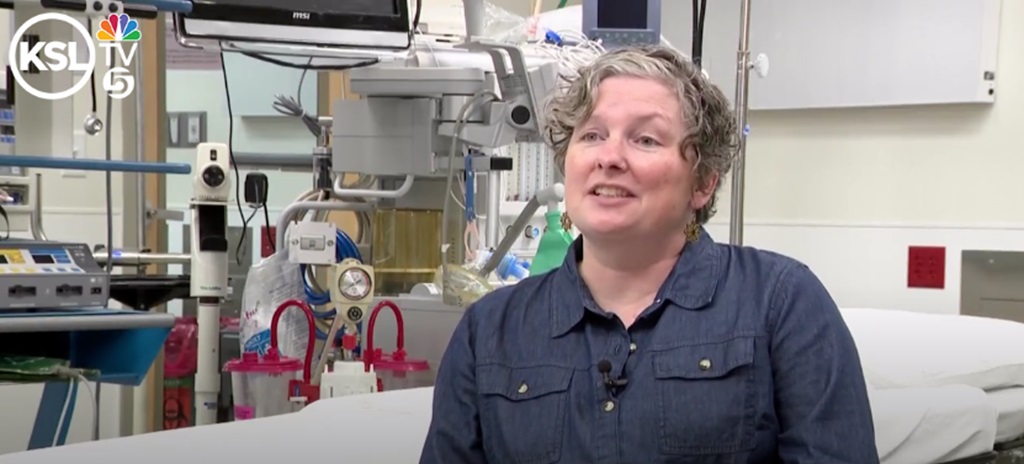From science fiction to reality: 3D tech helps save Utah teacher’s kidney

By Emma Benson
Click here for updates on this story
SALT LAKE CITY (KSL, KSL TV) — A Utah teacher is preparing to return to the classroom after doctors at Intermountain Health used cutting-edge 3D modeling and robotic technology to save her kidney.
When Sarah Machol suffered a painful kidney stone attack, she never imagined what doctors would discover next: a seven-centimeter cyst on her left kidney.
“I was stuck in the bathtub all night. I was in so much pain,” she said.
At first, she was told the kidney couldn’t be saved.
That changed when she sought a second opinion from Dr. Richard Matern, the lead robotics and surgical specialties surgeon for Intermountain Health’s Canyons Region.
“He actually let me see my CT scan, which I had never seen what this looked like or how it was impacting my body internally,” Machol said.
Using new state-of-the-art technology, Machol’s CT scan was converted into a 3D model by the system. That model was then integrated directly into the console of the Da Vinci 5 surgical robot.
Previously, surgeons could only view 3D images on a separate device, like a phone or tablet. That meant constantly looking away from the operating console to study the images, then going back to the surgery. Now, with the new system, the 3D model appears inside the console itself, so surgeons can manipulate and study it in real time while they operate.
Intermountain LDS Hospital was the first in the world to use the 3D model viewer in the DV5 robot.
“We can use the controls, we can look at the model, manipulate it while we’re looking at what we’re seeing inside of the patient,” he said. “It helped us be more efficient.”
The result: remarkable precision. Matern was able to remove the tumor, while saving 60% of Machol’s kidney — greatly lowering her risk of chronic kidney disease.
Machol says the experience still feels surreal.
“It feels like science fiction,” she said. “When I rolled into the ER, I saw all these advanced instruments, and I couldn’t believe that this was about to happen to me.”
Machol went home the same day. Now, just weeks later, she says she’s ready to get back to teaching third grade.
“I’m going to be back in the classroom next Monday — I can’t believe it,” she said.
Not only was Intermountain LDS Hospital the first in the world to use this advanced technology, doctors say it could transform surgeries well beyond kidneys.
“I think we’re just getting started on the advances with robotics,” Matern said. “I think we’re going to see a lot of steps forward, a lot of advances are going to be made with imaging-type things like 3D modeling.”
Please note: This content carries a strict local market embargo. If you share the same market as the contributor of this article, you may not use it on any platform.